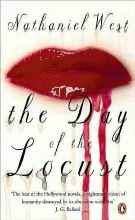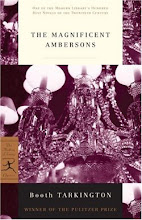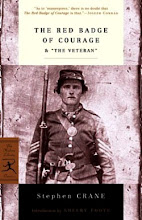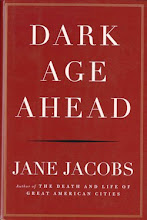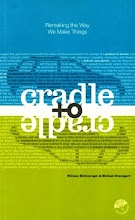
Market Street was filled with the Friday night summer mix of tourists, beggars and businessmen as I walked to my extravagantly overpriced hotel in Philadelphia. I had just completed an eight hour seminar for a group of interested professionals who had each paid five hundred dollars to hear me pontificate. The organization for which I am speaking tends to treat their lecturers well in order to keep them interested in undertaking the grueling task of carrying a full eights hours of lecturing without support or assistance. Even I had to admit that my 16th floor hotel suite was stunning.
The sleek and ultramodern wrap around windows provided me a king’s view of old Ben Franklin sitting atop of City Hall in the city center of Philadelphia. This type of luxury and opalescence can easily wash away the hours of drudgery standing before a crowd of thirty. In the back of my mind was a desire to step the experience up a level and treat myself to a guilty pleasure. My benefactors have yet to reject any expense associated with this lecture series, so I decided to find out what levels of excess they might approve. Why not? I had just earned the organization somewhere in the neighborhood of $10,000. With an eager anticipation I jumped on my computer and began surfing the web for the object of my desire.
For decades I have been traveling to Philadelphia for business, conferences and interviews and have always told myself as I walked past its doors that I would one day venture in and treat myself to pure indulgence. Over the years the time never seemed right or I was with the wrong crowd or I couldn’t spend sufficient time to enjoy it. Today however it was impossible to fly back home and I had a five star hotel suite only a few blocks away. Even if the unthinkable would happen and I was unable to physically get back to my sanctuary, I was confident that the able bodied hotel staff would come pick me up and carry me back to my suite if I so required. The stage was set for trip behind the velvet rope into a world that few get to experience.
It was not difficult to locate on the internet. It has been a Philadelphia landmark for almost four decades. In fact it was known as the leader of the "
Philadelphia restaurant revolution". Esquire described it as the best French restaurant in America. There it was Le Bec-Fin, which first opened in 1970. Owner and founder Georges Perrier named the restaurant after the French words for "
Fine Palate". The restaurant has consistently been rated as America's finest French restaurant and the Mobil Travel Guide has traditionally rated it as five stars.
I stumbled across an article from Peter Wells, the food critic at Food & Wine magazine. “
Our dinner reservation was at Le Bec-Fin, a restaurant I've dreamed about since college. When I arrived at the University of Pennsylvania in 1981, the school's promotional brochures bragged about what everybody in town called "the Philadelphia restaurant renaissance." The greatest of the renaissance chefs, the Michelangelo of Walnut Street, was Georges Perrier, who learned his craft at La Pyramide in France and began cooking in Philadelphia in the late '60s as a young man. By the time I arrived in the city, his Le Bec-Fin was recognized, both by the nation's reigning food critics and by the locals, as the best restaurant in town, maybe the best in the country.”
I continued reading. “
The entrance to Le Bec-Fin was still as forbidding as I recalled, with a brass plaque instructing us to ring the bell for admittance. Ignoring it, I pulled on the smoked-glass door and it swung open. We were in the world's smallest lobby; it was barely big enough for the hostess to step from behind her station and take our coats. Another door was opened and we were led into the dining room.
I believe we gasped. The new room was all white and gold, like a bride. Restaurants with chandeliers and mirrors usually make me picture either dotty great-aunts or beefy men with pinkie rings. This didn't. It was the kind of room that made you feel smart, cultured and attractive just for being there. At the same time, I wanted to run my fingers across the woven silk wall panels.

This was not the same room I would have seen in my college days. Five years ago, the Mobil Travel Guide demoted Le Bec-Fin from its top five-star ranking down to a mere four. Now, I have never met anyone who based his dining decisions on the Mobil Travel Guide. Who cares what a gas station thinks about food? Well, Philadelphia cared. The day Le Bec-Fin lost the star, TV trucks parked outside the door. And Georges Perrier cared. Boy, did he care. He had a nervous breakdown, followed by severe depression. He huddled with his psychic. He launched an investigation into what went wrong and fired a waiter he deemed responsible. He fired himself, turning over command of the kitchen to a chef from Daniel in New York. He hired a new wine guy, who added 500 bottles to the list. Finally, he tore down the dining room, ripping out the flocked persimmon-colored wallpaper, the fleurs-de-lis carpeting, the wrought-iron banisters, and several walls—everything but the chandeliers.”Carefully I looked up the other reviews, all of which indicated that Le Bec-Fin was still the heavyweight champion of the world. Life was on cruise control until I read one simple sentence that brought my world crumbling around me. It was a small footnote to one of the reviews which indicated that Friday or Saturday reservations required
months of advance notice……..months of advance notice…………. months of advance notice. The words repeated themselves over and over in my head as a black drape of sullen despair covered the room. After a brief but personally intense period of mourning I decided to give up the dream for another day and hauled myself down to lobby concierge.
To increase my bitter disappointment the young gentleman behind the concierge counter spoke with a French ascent as he asked “
How may I help you today, Mr. Blue?” At least he should be able to direct me to another French restaurant in the area where I can drink sufficient Champagne Royales to deaden my palette adequately to lure myself into imagining I’m at Le Bec-Fin.
I look at him emotionless and mumble, “
I really had my heart set on a dining experience at Le Bec-Fin, but I understand that it can take months to get a reservation.”
With an equally cold and emotionless face he replies “
Yes, that is true. I know because I also work there as a waiter.” I’m constantly amazed at how small the world is. Without providing me and opportunity to speak he continues, “
Let me make a call and see what I might be able to do?”
As the young man whispers into the phone I am reminded of a quote from Vaclav Havel.
“
Isn't it the moment of most profound doubt that gives birth to new certainties? Perhaps hopelessness is the very soil that nourishes human hope; perhaps one could never find sense in life without first experiencing its absurdity.”
Calmly the concierge concludes his phone call and hands me a slip of paper. “
Mr. Blue I was in deed fortunate to get you a reservation, but it might not be the finest table in the restaurant. The reservation is for 8:30, which leaves you plenty of time to walk to the restaurant.”
I discreetly hand my savior a twenty and joke “
You could probably seat me in the bathroom and I’d be happy. Thank you for your effort.” Slipping out the side door of the hotel I am astonished that I was in possession of a highly sought after reservation. I never thought to ask why I would be so lucky as to obtain such a rare opportunity.
On the four-minute walk, I pass Striped Bass and Susanna Foo, two restaurants that muscled in on Perrier's block. The city has renamed the side street across from Le Bec-Fin "
Georges Perrier Place," but the town fathers can't do anything to slow the advance of ambitious new competitors with a more modern outlook. As I approach 15th street there appears to be a large commotion ahead of me and it’s close to my designation. I’m unfazed, because it is not uncommon to find some sort of public protest in the streets of most cities. They tend to act as a form of entertainment, sort of a theatrical event to the average city dweller.
As I get closer the motley crew of fifty to seventy five is better organized than most with bullhorns, home-made signs, video equipment and a coordinated choreography to harass their targets of distain. It looks like the event is either just warming up or has just ended because the group is just milling around. I finally get close enough to realize that they are all wearing photos of ducks around their necks and on their posters. Ducks? How strange?
Could it be something with Disneyland and the exploitation of Donald Duck as a capitalist symbol? If that was it the ducks would be more like cartoons. Let me think. It’s not the start of hunting season. There is no reason to make all this noise when you are not allowed to shoot ducks. That can’t be it, I conclude. I know there has been a lot of debate about glass skyscrapers and the fatal impact those structures have on the migratory routes of birds. Apparently hundreds for thousands birds die each year by flying into glass windows on skyscrapers. Maybe it has gotten to the point that they have taken the issue to the streets in protest? Whatever the protest is about always seems to be some fringe issue with little relevance to the daily lives of most people.
It isn’t until I get close enough to read one of the signs that the mystery is revealed with stunning relevance. “
Ban Le Bec-Fin from serving Foie Gras”. Another sign shows Georges Perrier in a Nazi uniform standing on the bodies of dead ducks. I need to look twice. It’s amazing what you can do with Photoshop these days. I’m not sure if I follow the connection of serving French cuisine and the Nazi leader, but it seems to be a standard approach for calling attention to yourself.
Glancing across the street the crowd is focused on the single golden door of my desired location Le Bec-Fin and quite surprisingly I wanted to taste Foie Gras from the master. It is singularly one of my most favorite delicacies. If you have not tried Foie gras, it is one of the most popular delicacies in French cuisine and its flavour is rich, buttery, and delicate.
No, no, no, no!!!!!! Not tonight!!!! Why me????? Since my reservation is not for another 30 minutes I decide to cruise by the crowd on the opposite side of the street and get a better look at the situation. The group has hidden small pockets of protester on all four sidewalks leading to and from the restaurant. The hidden protesters are holding television screens showing the feeding and execution of ducks in the commercial production of Foie Gras. This technique has been adopted from the anti-abortion protester to emotionally shock casual viewer. Unfortunately for me it just evoked two thoughts. First was wow, I wonder how long that skinny pimple faced teenage can hold that huge television? My second reaction was probably not what the protesters wanted. Wow look how fat that duck is, I bet his liver is really tasty. It was sort of a dining promotion for duck liver. I guess they need to Photoshop more duck distress and pain into the video for me. Why pick on Foie Gras? Hell half these socially correct protestors probably live on hamburgers. Maybe they need to read Fast Food Nation to get an idea that every food is basically exploiting some species.
The technique of gavage dates as far back as 2500 BC, when the ancient Egyptians began keeping birds for food and deliberately fattened the birds through force-feeding. Today, France is by far the largest producer and consumer of foie gras, though it is produced and consumed worldwide, particularly in other European nations and the United States.
In modern foie gras production, force feeding takes place from 12−18 days before slaughter. The duck or goose is typically fed a controlled amount of corn mash through a tube placed in the animal's esophagus. Due to this force feeding procedure, and the possible health consequences of an enlarged liver, animal rights and welfare organizations and activists regard foie gras production methods as cruel to animals. Foie gras producers maintain that force feeding ducks and geese is not uncomfortable for the animals nor is it hazardous to their health. Scientific evidence regarding the animal welfare aspects of foie gras production is limited and inconclusive. A number of countries and other jurisdictions have laws against force feeding or the sale of foie gras due to how it is produced.
For me its like people that smoke crack, they are not really concerned about how many Bolivian boys are killed in the production of a fleeting sense of euphoria. If I need to give up my Foie Gras in order to save the world, maybe the world is not worth saving. I choose a different hill to fight on for the environment, not on a limited production of some small delicacy that is so expensive that no one can afford to eat it regularly. It’s time to get real.
Rounding the block, I decide to build my courage and make a run for the door. It is almost the exact same time I discover that the protest is not winding down but just starting. The bullhorns start blaring and the crowd chants while surging toward the door. The protestors have now pulled out video cameras to film the event and any customer that attempts to penetrate the golden door. It is beginning to turn ugly as the street is now blocked and the city of brotherly love starts to scream from the overheating cars stuck in the traffic jam.
As I elbow my way through the chanting protestors, I get about ten feet from the door when I notice a handful of casually dressed men with large black revolvers strapped to their sides apparently guarding the door of the restaurant. I can only assume that they were hired to guard the door, but they are now very agitated and nervous. Having grown up in New Jersey, I have witnessed and participated in my share of street fights and know the signs of someone pumping themselves up to deliver an ass-kicking. It’s the way you stand, more erect. It’s the way your arms swing to get loose. It’s the way you pull in big long breaths of air to supercharge your metabolism.
It’s right at this exact moment it dawns on me. What the hell am I doing in the middle of this? Come on it is only a meal, granted a pretty exceptional, once in a lifetime, to die for meal. Well maybe not to die. I can’t imagine myself enjoying the dining experience while the restaurant staff is pulling on riot gear and piling furniture against the door. Although it could be a real French revolution, Bastille Day type of experience, with the aristocracy dining on Foie Gras while the proletariat burn down the town. Discretion must be the better part of valor as I decide to give up the quest to gain entrance.
Walking away I think that if these protestors really looked at themselves they could find all sorts of things to be pissed about. The abused child labor used to make their sneakers; the mining operations used extract the precious metal used in their video equipment, the toxic solvents in the markers they used to paint their signs, the chemical contamination of the land used to grow the cotton in their underwear. No, for some reason they needed to jump all over an obscure practice that less than one in a thousand people might do once a year. Instead I just walked around the block to another famous restaurant and ate some fresh Copper River Salmon without noticing anyone concerned or protesting the likely loss of the wild salmon fisheries. I guess I will have to wait until another trip to the city of brotherly love to experience the magic of Georges Perrier’s culinary art. It was a bitter Le Bec-Less pill to swallow, but it only took three fine Kentucky bourbons to wash the disappointment from my mind.






 Photo by New Yorker Magazine
Photo by New Yorker Magazine  "As we look deeply within, we understand our perfect balance. There is no fear of the cycle of birth, life and death. For when you stand in the present moment, you are timeless."
"As we look deeply within, we understand our perfect balance. There is no fear of the cycle of birth, life and death. For when you stand in the present moment, you are timeless." 














